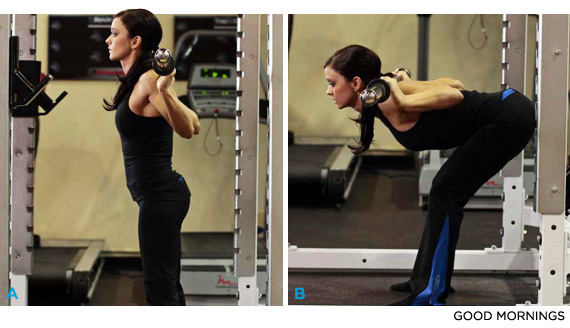“I don’t do those cause they hurt my back…”
And because of that I stopped putting the Romanian Deadlifts into most programs because inevitably I got that or,
“I don’t know how to do that”
I know, you’re thinking?
- WTF? You don’t know how to bend over?
To which I respond:
- It’s NOT about “bending over” and that’s the problem.
People think it’s just bending over….
It’s about: “hinging the hips”.
Bending over happens when the torso (shoulders) is projected forward over the toes with little to no backwards counter-movement of the hips and is usually accompanied by a flexing or “unlocking” of the lower back.
Like when people try to touch their toes: skip to 25 seconds in….
Hinging the hip occurs when the hip is projected backwards displacing the hip from the center of mass ie. the line of the shins.
The key is:
NOTHING ELSE CAN CHANGE!!!!
Warning: the audio on these videos is obnoxiously loud….TURN IT OFF….nothing interesting is said anyway....You’ve been warned!
The yellow line represents the center of mass, the beginning position of the hip.
The red line is the final position of the hip at the mid-point of the movement IE. final displacement.
You can see the hip (red circle) moves back along the white line.
While similar, hinging the hips and bending over are vastly different motions and hence the conceptual problem that exists with exercises like the RDL.
Everyone wants to bend over, flexing the lower back, “opening” the lumbar spine , blowing out their spinal discs and living the rest of their life in a body cast….
K, maybe not quite, but we know lumbar (low back) flexion is a bad thing…..
“spine discs only have so many numbers of bends before they damage.”- McGill
What I want is for them to “hinge the hips” pushing back as far as possible while maintaining the torso and shin angle.
The Torso (ears through hip) angle remains constant through the movement as you can see by the middle (bottom) position (green line) and start/stop position (yellow line).
This will activate the glutes and hamstrings as primary movers while using the low back, abs and upper back as stabilizers.
This is what hinging the hips is about….
Limiting the motion of the low back and maximizing the hips using the glutes and hamstrings (posterior chain) as the primary muscles of a movement.
While hinging the hip is super-duper-ultra important for EVERYONE to be able to do it’s especially important for people with knee pain.
Not only will hip dominant lifts like RDL’s, Pullthroughs, Deadlifts, Swings and Box Squats all help improve glute and hamstring strength which everyone can use more of….
“You can NEVER have too much ass”- said by me….often
Ass and Hammy strength are key to correcting knee issues….
Being able to train with a vertical shin limits Tibial Shear which is the cause of or at least will aggravate knee pain in a lot of people.
Key Points:
- The ear through hip angle NEVER changes.
- Soft knees but don’t squat.
- Push the hips back until just before the low back would round or you have to squat at the knees.
- Maintain the torso angle and push the hips through until standing tall.
Learning to initiate movement from, and hinge at, the hips is one of the most basic and essential movements of LIFE.
If you find yourself struggling with this….
WORK ON IT!
We’re talking about LIFE…it’s kinda important.
Once you’ve mastered the hip hinge you’ll be surprised how much better your knees, low back and hips feel.
Not to mention how much better your “posterior” will look….




[…] HKC, Strong First…it doesn’t matter who teaches it and the nuances, some hinge more, some less, regardless, it’s about hip hinging and […]